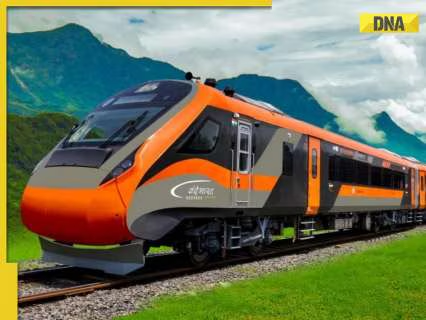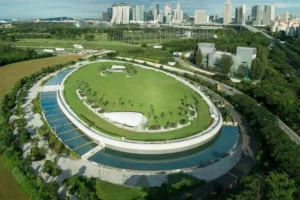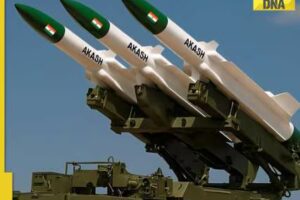
Indian Railways has launched new Vande Bharat Express trains to enhance connectivity to India’s top heritage and cultural cities. With routes like Banaras–Khajuraho, Lucknow–Saharanpur, and Delhi–Jaipur, the total count has reached 164, offering faster travel and modern onboard facilities.
In a significant stride toward boosting domestic tourism and ensuring faster, more comfortable travel, Indian Railways continues to expand its network of Vande Bharat Express trains. These semi-high-speed trains are connecting India’s major cultural, heritage, and pilgrimage destinations, bringing travellers closer to the nation’s historic heartlands.
Recently, Prime Minister Narendra Modi inaugurated four new Vande Bharat Express routes, including two that link prominent heritage destinations such as Lucknow and Khajuraho. With this addition, the total number of Vande Bharat trains operating across India has risen to 164.
Below are seven Vande Bharat Express trains that offer travellers a chance to explore India’s most iconic heritage corridors.
1. Banaras–Khajuraho Vande Bharat Express
This new service provides direct connectivity between Banaras (Varanasi) and Khajuraho, significantly cutting down the travel time by nearly 2 hours and 40 minutes compared to other trains on the route. Covering 443 km in 7 hours 40 minutes, it passes through Prayagraj and Chitrakoot, both known for their deep spiritual and cultural significance.
Fare: Rs 1,200 (AC Chair Car), Rs 2,200 (Executive Chair Car)
2. Lucknow–Saharanpur Vande Bharat Express (26503/26504)
Spanning a distance of 519 km in about 7 hours and 45 minutes, this train offers quicker travel and enhanced convenience for passengers from Lucknow, Sitapur, Bareilly, Moradabad, and Saharanpur. It also improves access to the holy city of Haridwar via Roorkee.
Fare: Rs 1,200 (AC Chair Car), Rs 2,400 (Executive Chair Car)
3. Delhi–Firozpur Vande Bharat Express (26462/26461)
This Vande Bharat is the fastest train between Delhi and Firozpur, completing the 486 km journey in just 6 hours 40 minutes. It enhances connectivity between the national capital and key cities in Punjab, such as Bathinda and Patiala.
Fare: Rs 1,360 (AC Chair Car), Rs 2,470 (Executive Chair Car)
4. Varanasi–Delhi Vande Bharat Express (22435/22436)
Connecting two of India’s most significant cities: Varanasi and Delhi, this service covers 771 km in 8 hours. The route includes stops in Kanpur and Prayagraj, offering travellers a comfortable way to visit these major cultural hubs.
Fare: Rs 1,820 (AC Chair Car), Rs 3,370 (Executive Chair Car)
5. Mumbai–Ahmedabad Vande Bharat Express (22961/22962)
Linking two major economic and cultural centres, this train covers 491 km in just 5 hours and 30 minutes. The route passes through Borivali, Vapi, Surat, and Vadodara, ensuring better regional connectivity between Maharashtra and Gujarat.
Fare: Rs 1,375 (AC Chair Car), Rs 2,495 (Executive Chair Car)
6. Delhi–Jaipur Vande Bharat Express (20978/20977)
The Delhi–Jaipur route, one of the most popular tourist circuits, now takes only 3 hours 37 minutes. With stops at Gurugram, Rewari, Alwar, and Gandhinagar, the service provides a quick, comfortable way to reach the Pink City.
Fare: Rs 1,055 (AC Chair Car), Rs 1,850 (Executive Chair Car)
7. Hazrat Nizamuddin–Agra Vande Bharat Express (22469/22470, 20171/20172)
Connecting Delhi’s Hazrat Nizamuddin Station with Rani Kamalapati Station in Madhya Pradesh, this train halts at Agra and Gwalior, linking some of North India’s most visited heritage sites. It covers the Delhi–Agra stretch in just 1 hour 36 minutes.
Fare: Rs 655 (AC Chair Car), Rs 1,255 (Executive Chair Car)
Expanding the Reach of Modern Rail Travel
The Vande Bharat Express trains have redefined short-distance travel in India since their debut in 2019. With their modern design, advanced safety features, and onboard comforts such as Wi-Fi, automatic doors, and reclining seats, these trains symbolise the modernisation of Indian Railways.
With 164 Vande Bharat trains now operational, they are not only reducing travel times between key cities but also strengthening India’s cultural and tourism circuits, making journeys faster, cleaner, and more enjoyable for millions of passengers.





